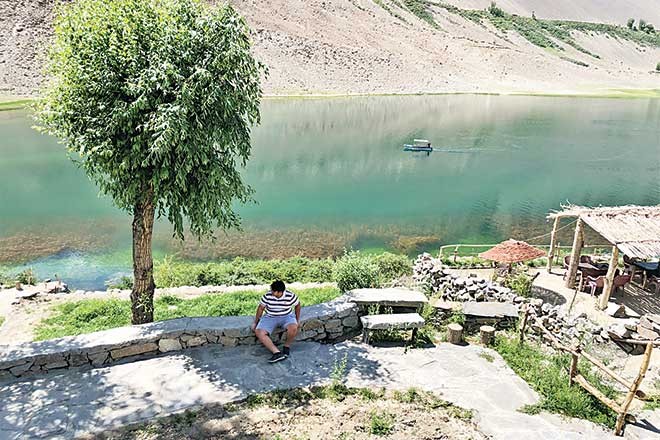

Hunza is nothing like anything you’ll ever experience, which is what makes the trip essential on your ‘places to visit before you die’ list. Right from the perilous yet picturesque flight from Islamabad to Gilgit (if you plan to fly instead of drive), the unforgiving slate grey mountainous terrain, the snow capped peaks and the generous orchards that drop fruits and berries like a rain cloud… Hunza is a reminder of the countless wonders of nature.
I’ll be writing about my Hunza experience in detail in Part 2 of this travelogue next week but I thought I’d introduce the region through its gastronomical offerings first. Like the rest of the place, it’s really nothing like anything you’ll ever experience.
Fruits, berries and nature’s little treats
Cherries: Local produce and food is what you want to indulge in when in Hunza and like anywhere else in the world, local produce will change according to season. We went at a time when the cherries were ripe and so we went into complete cherry overdrive. People visiting Hunza in September and October will get ripe and ready-to-eat apples and apricots, which dotted every second tree but were still not ready to be plucked in July.
Apricots: Speaking of apricots, an interesting learning was the power of the dry apricot. The Hunza Valley, at an approximated 8200ft above sea level, threatens to disrupt breathing patterns because of the high altitude. We were consistently out of breath until the locals told us to chew on dry apricots; it was nature’s way of helping them cope with blood pressure and breathlessness at this height, they believed. We stocked up when on our way to the Khunjerab Pass.
Potatoes: Everyone loves potatoes but Hunza potatoes were just a little more irresistible than the average spud you get anywhere else. We randomly ordered the potato wedges at a quaint little restaurant called the Kha Basi (run entirely by women) and I have to say they were the best fat chips I’ve had in Pakistan.
Rainbow trout: It’s not just something that’s romanticized without reason. The Rainbow Trout - born and bred in icy cold rumbling waters of the Indus - is food from the heavens. We had our trout grilled and served on a bed of steamed vegetables, smothered with a healthy dash of turmeric butter. It was worth going back for.
Café de Hunza and other tourist cafés
We were in Hunza for a weekend, so honestly, could not manage all the cafes and restaurants recommended by friends and family. What we had to experience - of course - was the Café de Hunza, one of Hunza’s most publicized tourist attractions. Luckily it was a brief climb beyond our hotel (we were staying at the Serena Hunza Inn) and so we headed out for breakfast one morning.
One thing you should know before eating at any restaurant in Hunza - you can’t rush the service. Food is generally made from scratch with limited tools and resources; you have to appreciate the human touch and be patient.
The food at Café de Hunza, I felt, was seriously overrated. The coffee and the desserts, however, were delicious and rose to the hype. Therefore, it was better when we went post dinner, another day, for our shots of Espresso and yes, that infamous Walnut Cake which is incredible. My advice: have the Walnut Cake there and order in advance for the cake that you want to take back home. Baked in a crumbly pastry encasing honey caramelized fresh walnuts, it (deceptively) felt like you were eating something very healthy.
The other restaurant we ate at was the Kha Basi Café at the foot of the Altit Fort. A good idea would be to order before making the 40-minute trek up to the Fort, as that’s how long it takes them to prepare the food. We ordered a basic desi menu of karahi and biryani alongwith the highly recommended potato wedges and the food wasn’t bad. The two interesting Hunza specialties on our order however were Hoi Garma and the Diram Phiti. Hoi Garma, for the uninitiated, is a fresh spinach dish cooked with hand-rolled pasta and crushed almonds and pine nuts. It’s cooked in a special Hunza apricot or kernel oil and has an interesting flavor. The Diram Phiti, the special dessert was a halwa indigenous to the region, and reminded me of the barley-drink sattu. Made from barley and brown sugar, the Diram Phiti, we were informed, was the local version of mithai popular at weddings. It was different but enjoyable.
Hunza Kabab - the kind we love in Karachi - could not be located in our brief trip. I think we’ll need to go back for that experience.
- More on the trip next week…